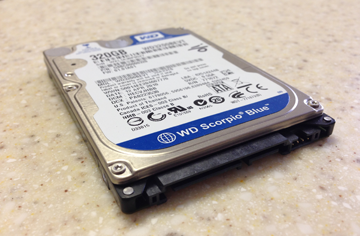Once you have determined the format, determine the desired storage capacity. The more GBs the disk can accommodate, the more money you pay. For the storage of photos and especially videos, large storage capacity is not a superfluous luxury. You may be able to use fewer GBs for storing documents. When purchasing an external 2.5-inch drive, you have a broad choice of products with a capacity between 1 and 5 TB. The options are perfect there for hdd recovery.
There are also compact storage stations with less than 1 TB of space, although they are becoming increasingly rare. In the case of external 3.5-inch disks, the current range consists of products with 2 to 10 TB file storage. Pay attention here: some manufacturers boast with an external disk of 8 TB, where in reality two storage carriers of 4 TB each are processed. This results in a much larger housing. With this duo construction, external disks with more than 10 TB of data storage are also commercially available. Our advice: whoever chooses a product with two or more discs should opt for a nas.
Nas

A nas can best be described as an external drive with its own operating system. Because this device is connected to the home network with an ethernet cable, you can access your files with any computer. It’s ideal for those who want a central and secure storage location for important files at home. Since a nas can also run applications, this device also offers much more functionality than a regular external drive. For example, you can stream media files to a smart TV and automatically save surveillance images from IP cameras. With the more expensive models, you can usually place several 3.5-inch discs in the case.
Disk speed
A hard disk consists of several rotating layers (platters) that usually run at a fixed speed. Manufacturers express this value in rpm (rotations per minute). The speed is essential for the speed of a 2.5 or 3.5-inch disk. The higher the rotation speed, the less time the disk needs to read and store data. Most external 2.5 inch discs have a speed of 5400 rpm. Since 3.5-inch disks have access to more power, they often support a slightly higher rotational speed of 7200 rpm. Pay attention here, because there are also 3.5-inch discs with a speed of 5400 or 5900 rpm for sale. Although they are more energy efficient, they also offer a lower reading and writing speed. The advantage of this is that the disc becomes less hot,
USB standard
You connect the drive via a USB port to the computer. In addition to the speed, the used USB standard also has a great deal of influence on speed performance. The vast majority of products have a usb 3.0 connector, where a theoretical throughput of 5 Gbit / s can be achieved. The newest products have a USB3.1 connection, for which a maximum transfer rate of 10 Gbit / s applies. Keep in mind that you need a suitable USB port on the computer to take advantage of a higher USB standard. By the way, don’t be put off if your PC or laptop only contains usb 2.0 ports. You can easily connect a USB3.0 drive to this, although the speed is limited to a maximum of 480 Mbit / s.




